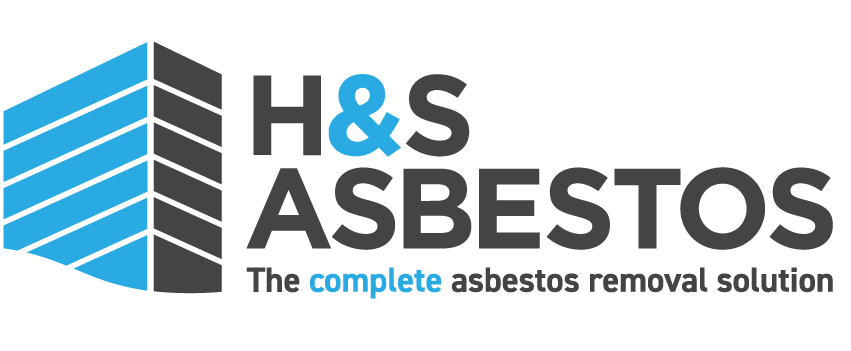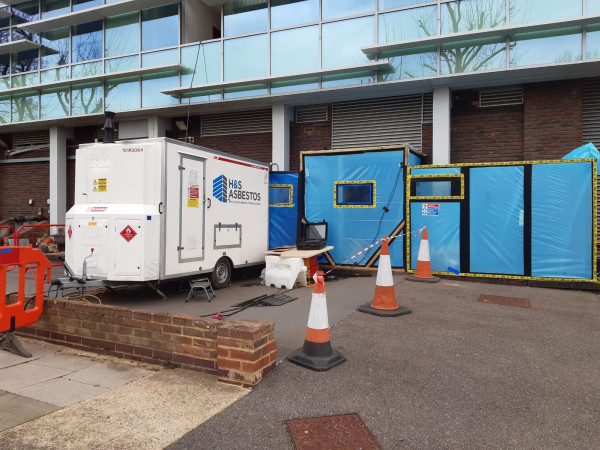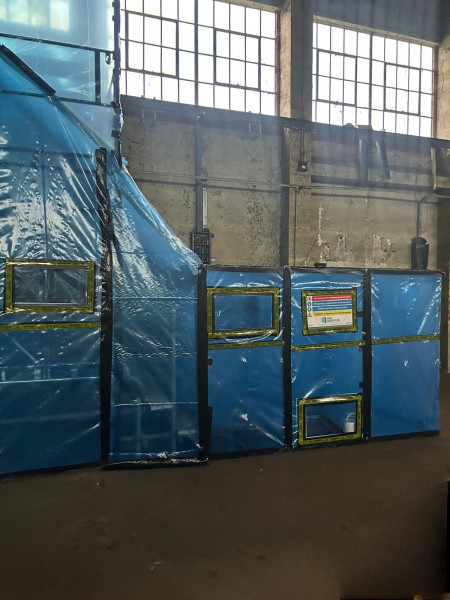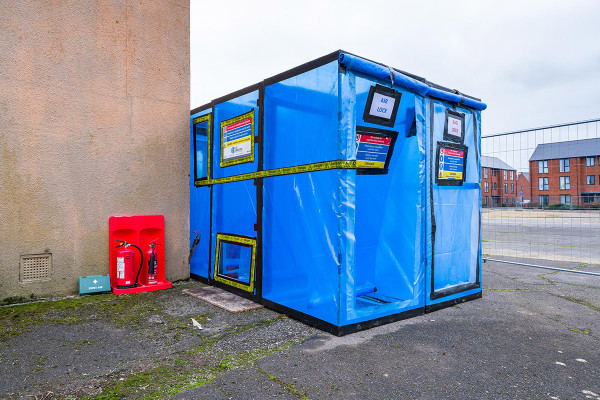Find clear answers to common questions about asbestos removal and surveys, including safety, legal requirements, processes, and costs. Whether you’re a homeowner, contractor, or business, this information will help you understand what to expect. If you need further details, please contact us.
Asbestos Removal FAQs
Asbestos removal is the safe process of taking out materials that contain asbestos from a building. It helps prevent the release of harmful fibres into the air and must be done by trained professionals.
- Survey – Identify asbestos and assess risk
- Plan – Choose the right method and safety measures
- Set up – Seal the area and prepare equipment
- Remove – Carefully take out the asbestos materials
- Clean up – Use specialist tools to remove dust
- Dispose – Transport waste to a licensed disposal site
- Test (if required) – Air testing and clearance
You’ll get full documentation when the work is complete.
Yes, in some situations. You must remove asbestos if:
-
It’s damaged or likely to be disturbed
-
You’re doing refurbishment or demolition
-
It’s been identified as high-risk
For non-domestic buildings, removal may be required to meet legal duties under the Control of Asbestos Regulations 2012.
If you discover or suspect asbestos in your home or on-site, it’s important to act carefully to reduce health risks. Asbestos is most dangerous when disturbed, as this releases harmful fibres into the air. Avoid touching, drilling, cutting, or damaging any materials that might contain asbestos. Instead, contact us for expert advice, professional sampling, and safe testing. Our experienced team will confirm whether asbestos is present and guide you through the next steps to ensure your safety and compliance.
Only trained professionals should remove asbestos.
-
High-risk work (like pipe insulation or sprayed coatings) must be done by an HSE-licensed contractor
-
Lower-risk work (like asbestos cement) can be carried out by trained but non-licensed workers
Always check the company’s credentials before hiring.
We remove all common forms of asbestos found in domestic, commercial, and industrial properties. This includes:
- Garage and shed roofs
- Ceiling and wall panels
- Floor tiles
- Asbestos cement sheets
- Pipe lagging and insulation boards
Our team safely removes both internal and external asbestos in line with all legal and environmental regulations.
We can usually book a site visit to inspect the works within a week, depending on your location and urgency. In some instances the removal costs can be priced from a thoroughly completed and detailed R&D Survey.
If it’s an emergency or high-risk situation, we can prioritise your job. The full removal can often be booked in quickly, with works completed in line with the agreed duration with our RAMs/method statement, and taking into consideration the size and type of works needing to be undertaken.
Yes — when done by trained professionals.
We use:
- Sealed work areas
- Protective clothing
- Specialist tools and filters
Everything is done under strict health and safety rules to protect you and our team.
Sometimes, yes.
For licensed work or work in occupied areas, you may need to stay away for safety.
We’ll tell you in advance if this is necessary and keep any disruption to a minimum.
Asbestos is sealed in special packaging, labelled as hazardous waste, and taken to a licensed disposal site.
You’ll receive waste transfer notes confirming safe and legal disposal.
Asbestos waste must be double-bagged in heavy-duty plastic bags, labelled as hazardous waste, and disposed of at a licensed disposal facility. It is illegal to dispose of asbestos waste with regular household waste.
The duration of the asbestos removal process can vary significantly depending on the extent of the contamination, the type of asbestos-containing material and the condition of the asbestos. If areas are harder to access, this can also increase the time required.
The cost of asbestos removal can vary widely depending on the size of the area, the type of asbestos-containing materials, and the complexity of the removal process. For a detailed quote, please get in touch.
Asbestos Survey FAQs
An asbestos survey is an inspection of a building to identify the presence of asbestos-containing materials (ACMs).
You legally need one if you are:
- The duty holder (owner or manager of non-domestic premises) under Regulation 4 of the Control of Asbestos Regulations 2012
- Planning refurbishment or demolition of a building
A survey helps manage risk and stay compliant with the law.
There are two main types:
- Management Survey – For day-to-day building use and maintenance.
- Refurbishment & Demolition Survey – Required before any major renovation or demolition work.
We'll help you choose the right type based on your property's condition and your plans.
Surveys should be done by trained professionals. Ideally, the company should be:
-
UKAS accredited (for high-quality standards)
-
Using surveyors with a qualification like BOHS P402
This ensures your survey is reliable, legal, and safe.
Yes — we provide asbestos surveys for:
-
Commercial properties (offices, schools, industrial buildings, etc.)
-
Domestic properties (especially communal or rented housing)
If you're unsure, we can advise on what’s legally required.
Yes, but you must disclose any known asbestos.
If you're selling a non-domestic property (or a residential property built before 2000), it's a good idea to get a survey to identify and manage any risk, especially if the buyer requests one.
Costs vary depending on:
- The size and type of the building
- Whether you need a Management or R&D survey
- We’re happy to give you a quote based on your specific needs.
Most surveys take between a few hours to a full day, depending on the size and complexity of the property.
You’ll usually receive the full report within 2–5 working days.
A Management Survey is generally non-intrusive and won’t damage anything.
A Refurbishment or Demolition Survey is more detailed and may require access into walls, ceilings or floors, which can involve minor damage.
We’ll always explain what to expect before starting.
Your report will include:
-
A list and location of any asbestos-containing materials (ACMs)
-
Photos and site plans
-
Risk assessments (material and priority)
Lab test results from a UKAS-accredited lab
Recommendations for managing or removing any asbestos.
Don’t worry, finding asbestos doesn’t always mean it must be removed.
We’ll:
- Advise on whether it needs management or removal
- Help you stay compliant with the law
- Offer guidance on next steps or safe removal, if needed
General Asbestos FAQs
Asbestos is a naturally occurring fibre that was typically used in construction last century. There are officially six different types (Chrysotile, Crocidolite, Amosite, Tremolite, Actinolite and Anthophyllite) of asbestos, however the three most common types of asbestos are White Asbestos (Chrysotile), Blue Asbestos (Crocidolite) and Brown Asbestos (Amosite) and each type is made up of millions of thin fibrous crystals. Asbestos is also split into two main classes:
- Serpentine – curly fibres and easily absorbs water (hydrophilic)
- Amphiboles – needle-like fibres and repels water (hydrophobic)
It is a really, really versatile material. It adds strength and flexibility and can provide heat, sound and electrical resistance.
This means asbestos can be found in a huge variety of products and materials. These materials have become known as ACMs, or Asbestos Containing Materials.
Asbestos can be found all over the world. It is still mined and used in many large and developing countries, often without the full knowledge of the dangers. Even in the US asbestos hasn’t been completely banned! Other countries that still permit asbestos to be imported, exported and used include Russia, Kazakhstan, China, India and Brazil.
UK, The European Union, Australia, Hong Kong, Japan, New Zealand, South Africa, and Canada.
Lagging
Lagging is a type of material used to fill gaps between walls, under floors, above ceilings or in lofts. It is used to provide heat-proofing and sound-proofing and insulation.
Sprayed and textured coatings
Asbestos could be added to mixtures and sprayed onto surfaces, walls and ceilings. Community buildings or public areas, such as halls, schools, car parks and cinemas, often featured this type of asbestos – sometimes just to provide decoration! Spray coatings would give insulation (sound and heat) to ceilings, especially in high-rise buildings, as well as fire-proofing. This material is still considered to be one of the worst for fibre release.
Insulation
Boilers, pipes and anything that could generate heat were often insulated with Asbestos containing materials.
Cement and tiles
This is one of the most common types of ACM and can be found in roofing, flooring and insulation. Any industrial, commercial, domestic or public building could feature these tiles and cements.
Plastics
Its versatility meant that it was a perfect material to use both during the manufacturing process and as part of a finished product. In manufacturing asbestos would be ground up and combined with an existing plastic. This plastic could then be used to make finished products like:
Parts for cars and planes, gaskets, brake linings, Electric and electro-mechanical parts (e.g., switches, circuit breakers), and appliances, toilet cisterns, water tanks, Vinyl and PVC.
An asbestos survey is an effective way to help you manage asbestos in your premises by providing accurate information about the location, amount and type of any asbestos-containing materials (ACMs).
An asbestos survey should only be carried out by competent surveyors who can clearly demonstrate they have the necessary skills, experience and qualifications. The survey will usually involve sampling and analysis to determine the presence of asbestos. Following a survey, the surveyor should produce a survey report which details and identifies the following findings:
- the location of any asbestos-containing materials in the building
- the type of asbestos they contain
- condition these materials are in
If undertaking maintenance, refurbishment or demolition works, the asbestos survey can help to provide enough information so that an asbestos register, a risk assessment and a management plan can then be prepared for members of the public or trades.
Non-Domestic Premises – If you are responsible for maintenance and are the duty holder for the asbestos, you must either arrange a survey or presume the worst case of widespread asbestos in the premises and would then need to take all appropriate full stringent precautions for any work that takes place.
There are three categories of asbestos works:
- Notifiable Licenced Work
- Notifiable Non-Licenced Work (NNLW)
- Non-Licenced Work (NL)
Notifiable licenced work can only be carried out by somebody who holds a licence issued by HSE because of the hazardous nature of these higher risk materials. These materials include sprayed asbestos coatings, asbestos insulation or asbestos lagging and most work with asbestos insulating board (AIB). Furthermore, the HSE must be notified 14 days prior to the work beginning, by completing and submitting an ASB5 e-form (this must be completed by the licence holder).
Notifiable Non-Licenced Work (NNLW) can be carried out by non-licenced contractors, however must still be notified to the HSE by completion of ASB NNLW1 e-form. These works will still need to be undertaken with the appropriate controls in place and employers will have additional requirements such as medical surveillance and record keeping. NNLW relates to lower risk asbestos-containing materials (ACM’s) concerning maintenance or removal of textured decorative coatings, insulating board (maintenance), asbestos insulation (maintenance), damaged or to be broken cement products, asbestos paper and cardboard products if not firmly bonded in a matrix.
Non-Licenced Work (NL) relates to lower risk ACM’s involved with short non-continuous maintenance tasks, removal of sealed/good condition ACM’s, air monitoring or associated with collecting and analysing samples to identify the presence of asbestos. The correct precautions will still need to be ensured and for some types of NL additional requirements for employers may apply. The type of ACM’s can cover minor textured decorative coatings, insulating board (maintenance or entirety removal), cement products, textiles, gaskets, floor tiles, bitumen roof felt, shingles, damp-proofing coatings, mastics and other firmly bonded matrix items e.g. paints, bitumen, resins and rubber.
All work with asbestos needs to be carried out with the appropriate controls in place and those carrying out the work must have had the correct level of information, instruction and training, to protect themselves (and others in the area) from the risks to health that exposure to asbestos causes.
Get An Estimate Today
Protect what matters most from the hidden dangers of asbestos.
Contact H&S Asbestos today for an estimate and take the first step toward a safer environment. Our experienced team is here to answer your questions and provide expert guidance tailored to your specific needs.
“H&S Asbestos provided us with a fantastic service at very short notice within a very specialised environment. They were professional and thorough throughout, and we would have no hesitation in employing their services for future projects.”
Dr Kieran Dineen





